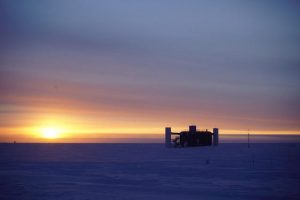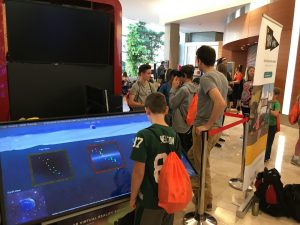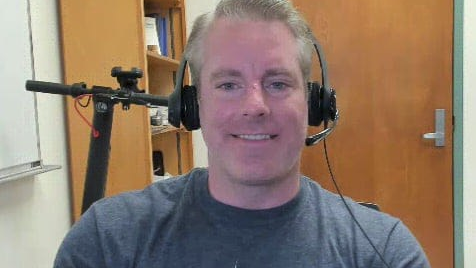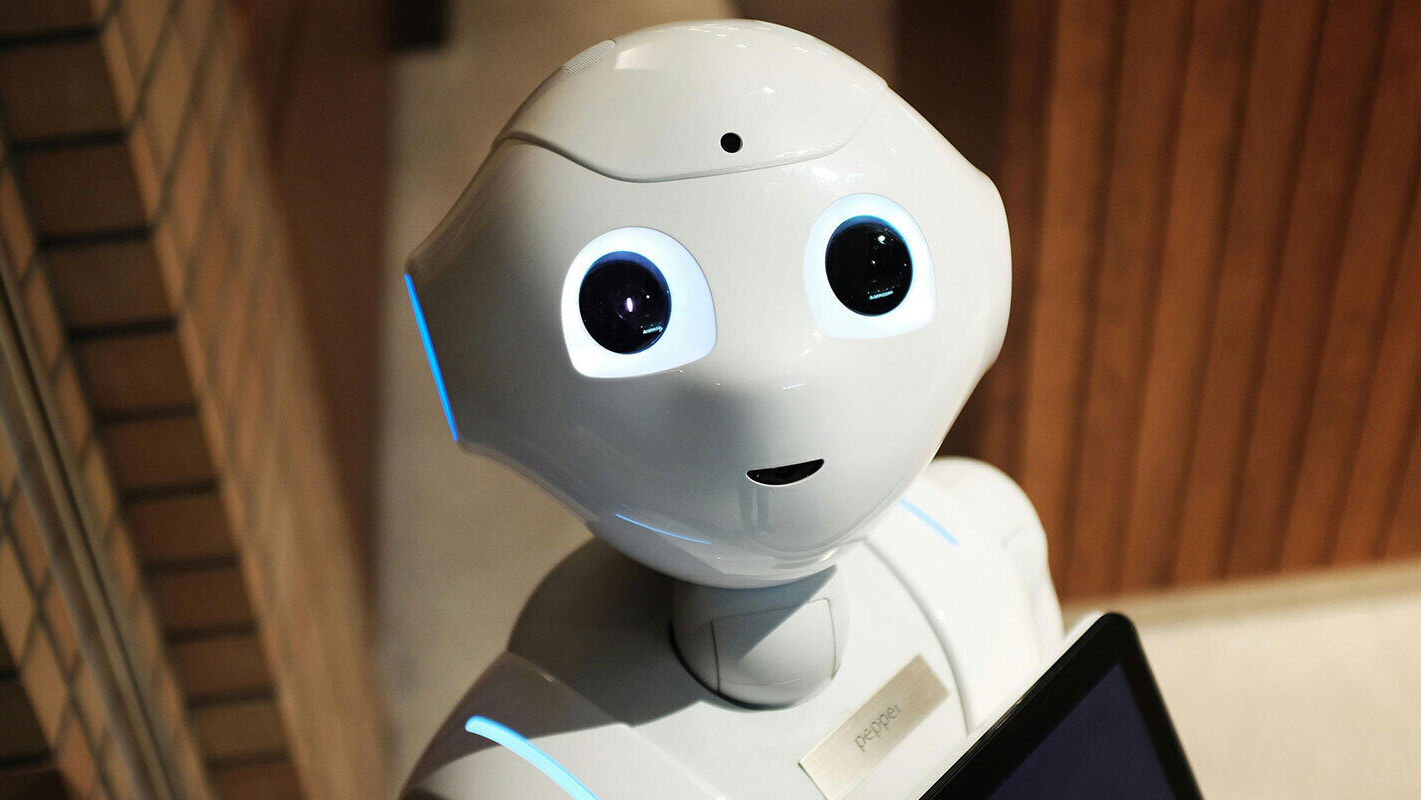Exploring a New Universe of Science Learning
Getting people excited about astrophysics is a difficult enough task. Getting them excited about astrophysics research happening thousands of miles away is an even taller order. But generating enthusiasm and promoting learning about microscopic particles detected by a facility at the South Pole was the goal of a collaboration between University of Wisconsin–Madison scientists at the Wisconsin IceCube Particle Astrophysics Center (WIPAC), educational game designers at Field Day Lab, and researchers in the Wisconsin Institute for Discovery’s Virtual Environments Group.
A paper published in the Journal of Stem Outreach this spring details the group’s efforts to bring neutrino detection to public spaces and suggests that interactive exhibits — including virtual reality (VR) — can be powerful informal science learning tools.

Sunset behind the IceCube Lab; Credit: Kathrin Mallot, IceCube/NSF
The IceCube Neutrino Observatory’s sensor array extends a kilometer beneath the Antarctic ice and is used to study high-energy particles ejected from exploding stars and black holes, particles which are undetectable by the naked eye or even by most sensitive instruments. Neutrinos, which barely slow down as they whiz right through the Earth, are elusive even to the scientists who study them to better understand the universe. So how, then, do you teach non-scientists — including children — about particles that they can’t see that are being detected by a research station all the way at the South Pole? The answer has implications that go beyond neutrinos and Antarctic physicists, and may tell us something about the future of informal science learning.
In 2013, WIPAC Executive Director Jim Madsen attended the Virtual Environments Group’s researchers’ open house, a monthly event with an open invitation to researchers across the UW campus to visit the lower level of the Discovery Building and find out how the technical and methodological expertise of the group can support research in domains of all sorts. Very quickly, it became clear that visualizations created in virtual environments made for immersive educational experiences.
A few years and multiple conceptual and outreach projects later, WIPAC and the Virtual Environments Group added the game design expertise of Wisconsin Center for Education Research’s Field Day Lab on a project funded by the National Science Foundation’s Advancing Informal STEM Learning program. “What we wanted to do was to create a very quick way to teach people about neutrinos and the IceCube detector,” says Associate Professor of Design Studies Kevin Ponto, a member of the Virtual Environments Group.
But building understanding about something as intangible as neutrinos posed an enormous challenge for Ponto and his collaborators. “We would have meetings in which we would spend an hour trying to get our heads wrapped around the IceCube detector; why it was built there, what it does, why you couldn’t do something else, what a neutrino is,” says Ponto. “[Then we would] take these meetings and digest them down and say, ‘Okay, how can we teach somebody else these big high level concepts [in one to three minutes]?’”

Visitors to the Discovery Building’s Saturday Science event engage with the VR and tabletop IceCube games (image captured before COVID-19 restrictions)
The resulting installation included the combination of a head-mounted, single-user virtual reality experience and a large multi-touch, multi-user tabletop screen. The team partnered with the Discovery Outreach group to place the exhibit on the publicly-accessible main floor of the Discovery Building. There, hundreds of children and adults engaged with the IceCube content on a journey from the South Pole to the outer limits of our galaxy. During the three-and-a-half-month research deployment, users answered survey questions to evaluate their experiences and to track learning outcomes.
The team found that overall, visitors to the exhibit departed with a greater knowledge of IceCube and neutrinos, achieving the fundamental goal of the project. They also found that the longer virtual reality experience created even greater understanding than the tabletop game. “What we saw is that people actually really did get these big high level concepts,” says Ponto, but an additional finding strikes him as perhaps even more important: “More surprisingly, they were inspired to learn more about [IceCube]… They came away from these experiences wanting to find more information.”
Such inspiration is a critical component for informal science learning, and the results published this spring in the Journal of Stem Outreach show promise for future work, both with IceCube and beyond. Ponto sees in this study great potential for engaging not only members of the public in outreach efforts, but also his fellow scientists, who may be wary about sharing their science with the public without including every detail. “It sounds like curiosity can be a bridge,” he says. “People can learn something, but if we can also make them curious to want to learn more, that opens the door to do more later on.”
While the Discovery Building remains closed to the public and the exhibit is no longer accessible, the game, Exploring the Universe from Antarctica, is available for free from the Oculus store (VR version) and the Google Play store (tabletop version). The video below further explores the development of the games. Read more from Field Day Lab on Medium.
— Nolan Lendved









